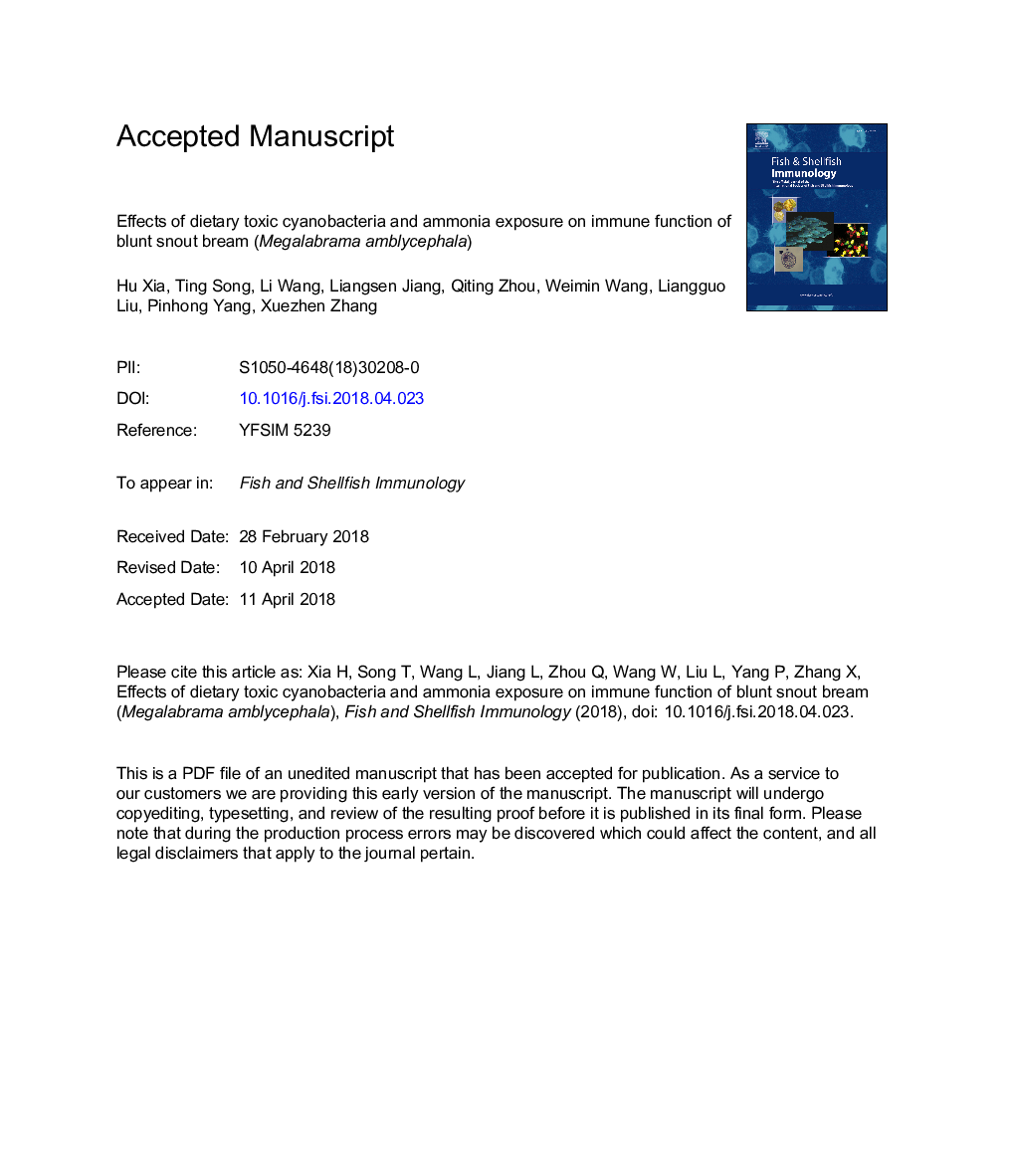| Article ID | Journal | Published Year | Pages | File Type |
|---|---|---|---|---|
| 8498403 | Fish & Shellfish Immunology | 2018 | 42 Pages |
Abstract
Cyanobacterial blooms caused by water eutrophication have become a worldwide problem. During the degradation of toxic cyanobacterial blooms, elevated ammonia and microcystins concentrations co-occur and exert toxicity on fish. Up to now, the combined effect of microcystins and ammonia on fish immunotoxicity has not been reported. The present study investigated immune responses of blunt snout bream (Megalabrama amblycephala) to dietary toxic cyanobacteria and ammonia exposure. Megalobrama amblycephala were exposed to solutions with different concentrations of NH3-N (0, 0.06, 0.12 mg/L) and fed with diets containing 15% and 30% of toxic cyanobacteria lyophilized powder for 30â¯d. The microcystins concentration in different organs of Megalobrama amblycephala was in the following sequence: head kidneyâ¯>â¯liverâ¯>â¯intestineâ¯>â¯gonadâ¯>â¯spleenâ¯>â¯gillâ¯>â¯trunk kidneyâ¯>â¯brainâ¯>â¯muscleâ¯>â¯heart. In both head kidney and spleen, the MC-LR and MC-RR concentration increased significantly with increasing NH3-N concentration. It indicates that NH3-N maybe promote the accumulation of microcystins in immune organs of Megalobrama amblycephala. Meanwhile, broadened peripheral interspace of lymphocytes, nucleus shrivel and edematous mitochondria were observed in head kidney lymphocyte of toxic treatment fish. Moreover, there were significant interactions between dietary toxic cyanobacteria and ammonia exposure on head kidney macrophage phagocytosis activity, respiratory burst activities, total number of white blood cells and the transcriptional levels of sIgM, mIgD and sIgZ genes. Our data clearly demonstrated that dietary toxic cyanobacteria combined with ammonia exposure showed a synergistic effect on Megalobrama amblycephala immunotoxicity.
Keywords
Related Topics
Life Sciences
Agricultural and Biological Sciences
Aquatic Science
Authors
Hu Xia, Ting Song, Li Wang, Liangsen Jiang, Qiting Zhou, Weimin Wang, Liangguo Liu, Pinhong Yang, Xuezhen Zhang,
